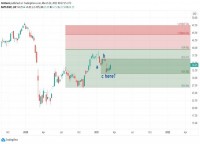|
A Picky System You may have noticed Kinkopf Capital Managementat the top of various CTA rankings. For instance, it is the third best program managing less than 10 million among top advisors for the past 12 months in a Managed Account Research ranking. Compound annual return for the 12 months through April was about 55%. Notably, the program performs very differently from most other managed futures programs. In 2008, a banner year for managed futures as a whole, Kinkopf Capital Management lost money. But in 2009, a bad year for CTAs, Kinkopf returned more than 43%. Correlation with the Barclay CTA index is minus 0.16. Ken Kinkopf has degrees in aviation and aviation electronics. Below he describes his picky take on S&P 500 futures. "To be disciplined in the trades you take, you have to be willing to wait." Even as a youngster I was fascinated with markets and wanted to be a trader. In the early 1990s I co-founded a commodity trading advisor where I did discretionary trading. I don't like discretionary styles—I think the trading system has to match your personality. I knew I wanted to be a systematic trader. It took several years to design the system that I've now been trading for 11 years. I designed the original system for myself-all my money is still in it. I did not start Kinkopf Capital Management until 2005 and even then did not actively solicit clients. The program consists of directional trading in S&P 500 futures only. There is no trend following component. The system is trend aware, in the sense that it identifies trends and does not go against them. It incorporates many factors that affect the S&P 500. A long time ago I tried trading currencies but realized there are so many variables that it would be hard to quantify them all. So I stick with equity futures. They're very liquid and the system is scalable. My approach is to be real picky. My system does not take every trade, but picks only those with the highest probability to go in the direction I expect. To be disciplined in the trades you take, you have to be willing to wait. There are conditions where I won't trade for two weeks because there is no trade with a high enough probability. But once the right signals come, we may be trading every day. At times I reverse direction mid-day, going both long and short. The time frame is short term, meaning one-to-three-day holding periods. This is not high frequency trading. Reducing Drawdowns It's different when you trade for yourself—volatility was something I personally could live with. But trading for clients, I realized I had to reduce the drawdowns. In 2007 I put in volatility scaling. That helped in 2008, which was not a good year for this style. The drawdowns were much smaller thanks to the volatility scaling. 2008 was a great environment for trend followers, but not for us. Markets were too volatile. Then 2009 was almost like the reverse of 2008; it was an excellent year for us. Most of 2010 so far has been perfect for our kind of system. My best year ever was 2000, when the market peak came down from the technology bubble but did not have intense daily swings. If there is another spike in volatility, our system will scale down and trade next to nothing. We will start to get back into the market when volatility becomes more normal. My feeling is that the S&P 500 won't make much progress in the next three years or so. It'll gain some, lose some, but will likely end up flat. I don't think people who invest in stocks will get a great return. For us, whether the market goes up or down means nothing, because our focus is short term. Which way the market is headed from month to month or year to year makes no difference. I've tested the system for other commodity futures and found that it works but have not started trading. I might start a separate program to trade certain other contracts. China opening up futures markets is an interesting opportunity, for instance. But I expect S&P 500 futures will remain our mainstay. |
|
This article was published in Opalesque Futures Intelligence.
|





 RSS
RSS









